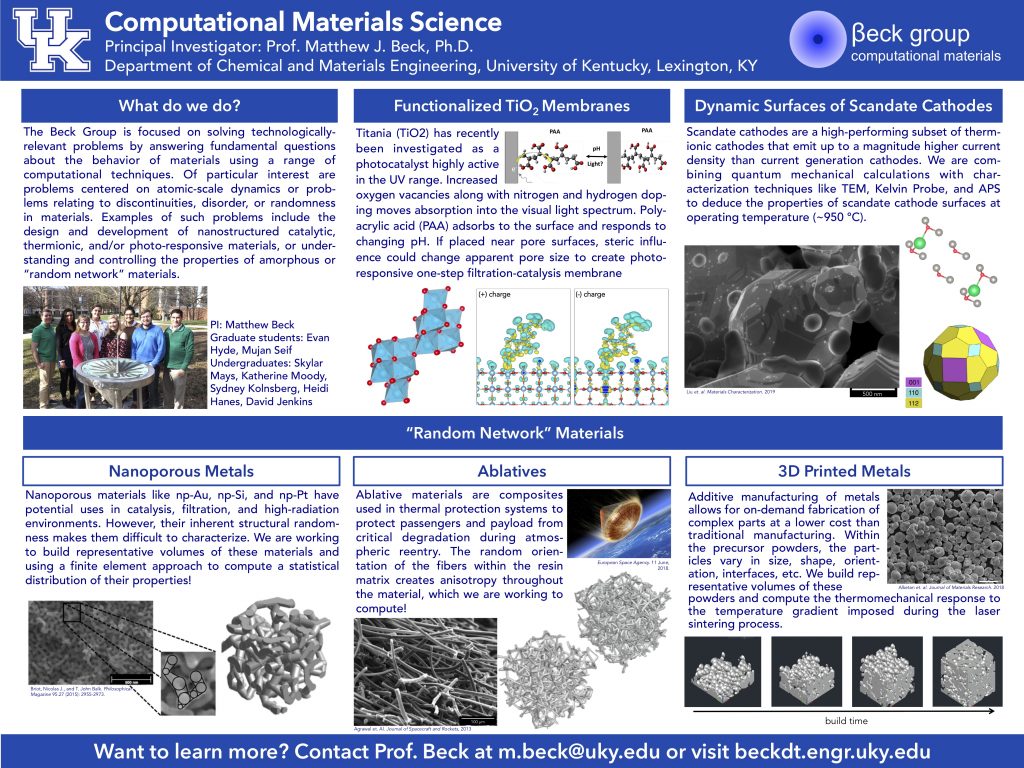What we actually do…
We’re Materials Engineers, which means we work to understand how materials work so that we can design new and better materials to address some real world problem or challenge.
We use calculation like a characterization experiment—like a microscope. We design inputs to test hypotheses, and use outputs to find structure–processing–properties connections.
Like experimentalists focused on materials characterization we know a lot about the tools we use—we have to to be able to use them effectively. In our case, the tools and methods are computational. While we do some development and invention of tools (coding) ourselves, our real focus is on using computational tools to explore and understand how and why materials work the way they do!
What do students learn in the Beck Group?
- How to interrogate real world problems and identify materials-focused hypotheses to solve them.
- How to break down questions about the performance of materials in real applications into fundamental questions about the structure and properties of materials at the micro-, nano-, and atomic-scales.
- How to apply state-of-the-art computational methods to answer questions about materials structure and properties at multiple length scales.
- How to manage and interact with state-of-the-art computational hardware to enable high-performance research computing.
- How to effectively and deeply interact with experimental researchers, leverage experimental results, and design and carry-out targeted experimental efforts in support of broader computational research.
- How to effectively and impactfully communicate scientific results and technical knowledge.
Examples of Recent Projects

Learn More…
- Capabilities Summary and Research Interests
- Research Group Overview
- Kentucky Random Structures Toolkit (KRaSTk)
- Nanoscale Surface Properties
- Summary of Past Projects